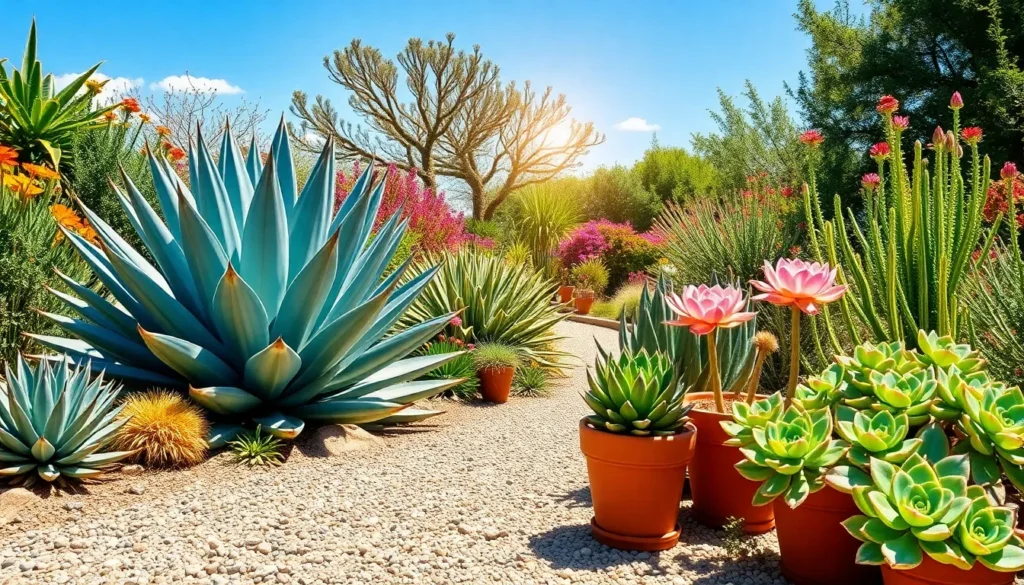In the ever-changing tapestry of climate conditions, gardeners are increasingly reaching for resilient plants that can thrive under the sun’s relentless gaze. Whether you’re just dipping your toes into gardening or you’re a seasoned green thumb, understanding how to cultivate a vibrant garden in hot, dry climates is both a rewarding and crucial endeavor. The key to success lies in selecting plants that not only survive but flourish with minimal water, turning your garden into a lively oasis even during the driest spells.
In this article, we’ll introduce you to six remarkable drought-resistant plants that have mastered the art of enduring heat with grace. You’ll discover the unique characteristics of each plant, along with practical tips on how to integrate them into your garden. By the end, you’ll be equipped with the knowledge to create a stunning, sustainable garden that conserves water without compromising on beauty. Let’s embark on this journey together, embracing the transformative power of drought-resistant plants for a thriving, eco-friendly garden.
Understanding Drought-Resistant Plants
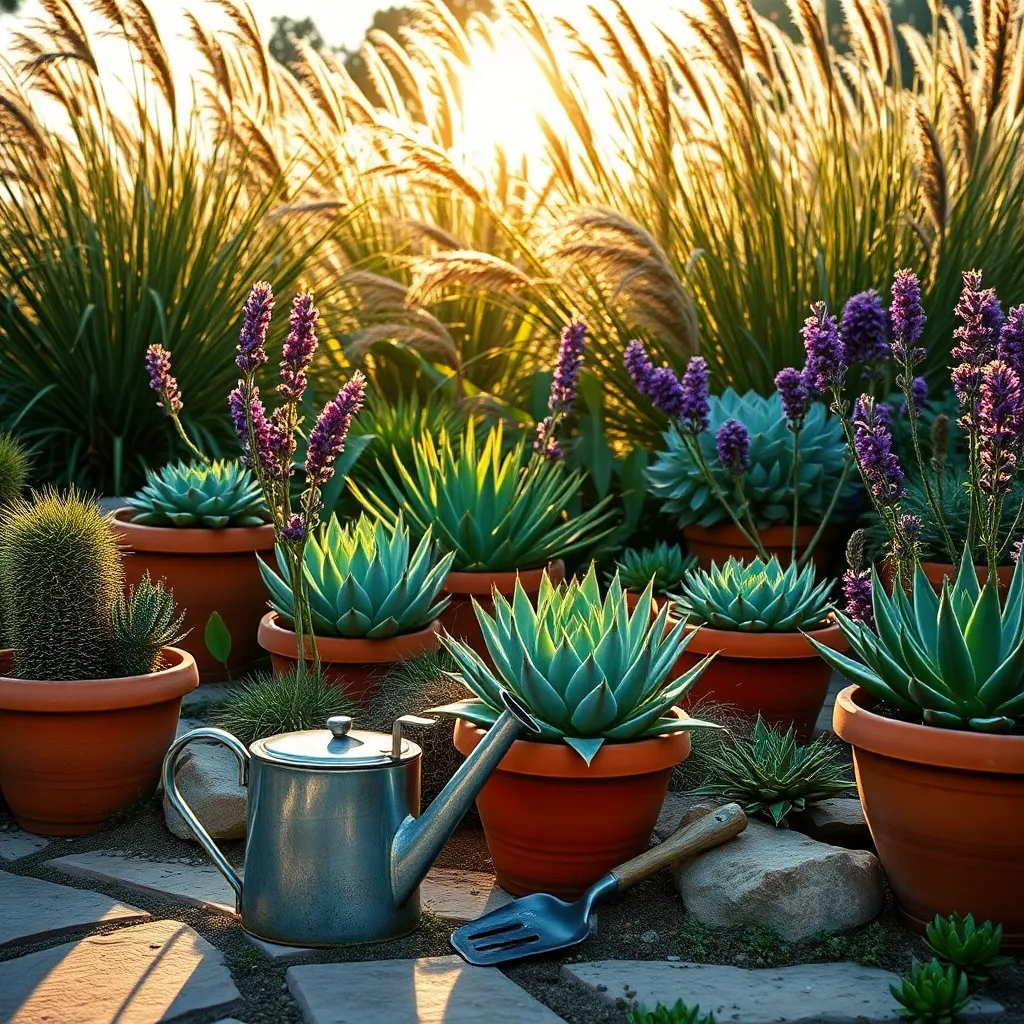
Drought-resistant plants are an excellent choice for gardeners living in hot climates, where water conservation is a priority. These plants have adapted to thrive with minimal watering, making them both environmentally friendly and cost-effective.
For successful growth, it’s crucial to begin with the right soil; sandy or gravelly soil types are ideal as they ensure good drainage. You can also amend your soil with organic matter to improve its texture and nutrient content, providing a better growing environment for these resilient plants.
When watering drought-resistant plants, it’s essential to do so deeply but infrequently, encouraging roots to reach further into the soil. Typically, watering once every two weeks is sufficient, but always adjust based on the specific plant type and current weather conditions.
For more advanced gardeners, consider implementing a mulch layer around your drought-resistant plants. This will help retain soil moisture and suppress weed growth, further reducing the competition for water.
Another effective technique is grouping plants with similar water needs together, which simplifies irrigation and ensures that each plant receives the proper amount. This approach not only conserves water but also creates visually harmonious garden beds.
By selecting the right plants and employing these practical care techniques, you can maintain a thriving garden even in the hottest climates. Embrace the beauty and resilience of drought-resistant plants and enjoy a garden that flourishes with minimal effort.
Top Picks for Arid Gardens
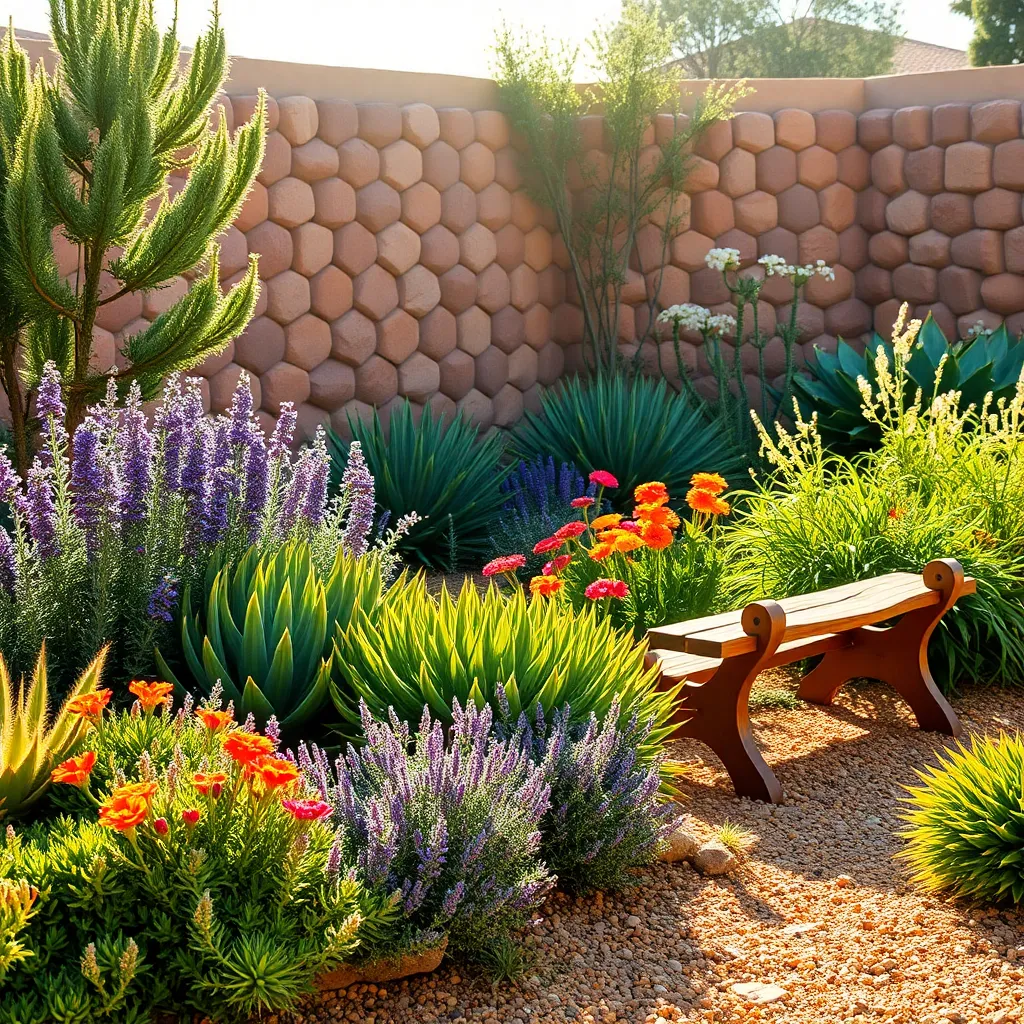
When selecting plants for arid gardens, consider varieties that thrive with minimal water. Succulents are excellent choices due to their water-storing capabilities and resilience in hot climates. They require well-draining soil, such as a mix of sand and perlite, to prevent root rot. Ensure their containers have adequate drainage holes to maintain optimal soil health.
Agave is another striking addition to a drought-resistant garden, known for its bold, architectural form. It thrives in full sun and well-drained soil, needing only occasional watering once established. To encourage healthy growth, apply a balanced fertilizer sparingly during the growing season. Be cautious when handling agave, as its sharp tips can cause injury.
For a splash of color, consider planting lavender, which not only adds visual interest but also invites pollinators. Lavender prefers sandy, alkaline soil and full sun exposure. Prune regularly to maintain its shape and encourage blooming, ensuring that you do not cut into the woody stems. This hardy plant benefits from a deep watering every few weeks during dry spells.
Incorporate ornamental grasses like blue fescue to add texture while conserving water. These grasses are low-maintenance, thriving in a variety of soil types as long as they are well-drained. Trim back dead foliage in early spring to make way for new growth. Consider grouping them together for a dynamic landscape that sways gracefully in the breeze.
Characteristics of Heat-Tolerant Flora

Heat-tolerant flora often boast adaptations that help them thrive in extreme temperatures. Thick, waxy leaves are a common feature, which minimizes water loss and helps plants survive during prolonged droughts.
Another characteristic is a deep or extensive root system that allows these plants to access water from deeper soil layers. This adaptation is particularly beneficial in areas with infrequent but heavy rainfalls, as it enables plants to maximize water uptake.
Some heat-tolerant species have small or needle-like leaves, reducing the surface area exposed to the sun. This feature helps to reduce water loss through transpiration, which is crucial for survival in hot, dry climates.
Incorporating heat-tolerant plants into your garden requires understanding their specific needs. Select well-draining soil as it prevents root rot, a common issue when water sits around the base of plants in hot climates.
Watering techniques are vital to support these plants. Employ a deep watering method once or twice a week, ensuring moisture reaches the roots without over-saturating the soil.
For more advanced care, consider using mulch to help retain soil moisture and keep root temperatures stable. Organic options like straw or wood chips are excellent choices, providing both moisture retention and added nutrients as they break down.
Caring for Resilient Plant Varieties

To ensure the success of drought-resistant plants, it’s essential to mimic their natural environment as closely as possible. Choose well-draining soil such as sandy or loamy mixes, which prevent water from pooling around the roots and causing rot.
Watering these resilient varieties requires a different approach than more traditional garden plants. Apply water deeply but infrequently, allowing the soil to thoroughly dry out between sessions to encourage deeper root growth.
Mulching around the base of your plants can help retain soil moisture and keep temperatures stable. Organic mulches like straw or wood chips are excellent choices, as they also break down over time to enrich the soil.
For those looking to optimize their garden’s resilience, consider using companion planting techniques. Planting drought-tolerant species in groups can create a microenvironment that reduces evaporation and provides shade for the soil.
Advanced gardeners might explore using drip irrigation systems, which deliver water directly to the plant’s roots with minimal waste. This method is particularly effective in hot climates, ensuring efficient water use and promoting plant health.
Regularly check your plants for signs of stress, such as wilting or browning leaves, and adjust care as needed. With the right attention and techniques, your drought-resistant garden can thrive even in the hottest conditions.
Maximizing Growth in Dry Climates
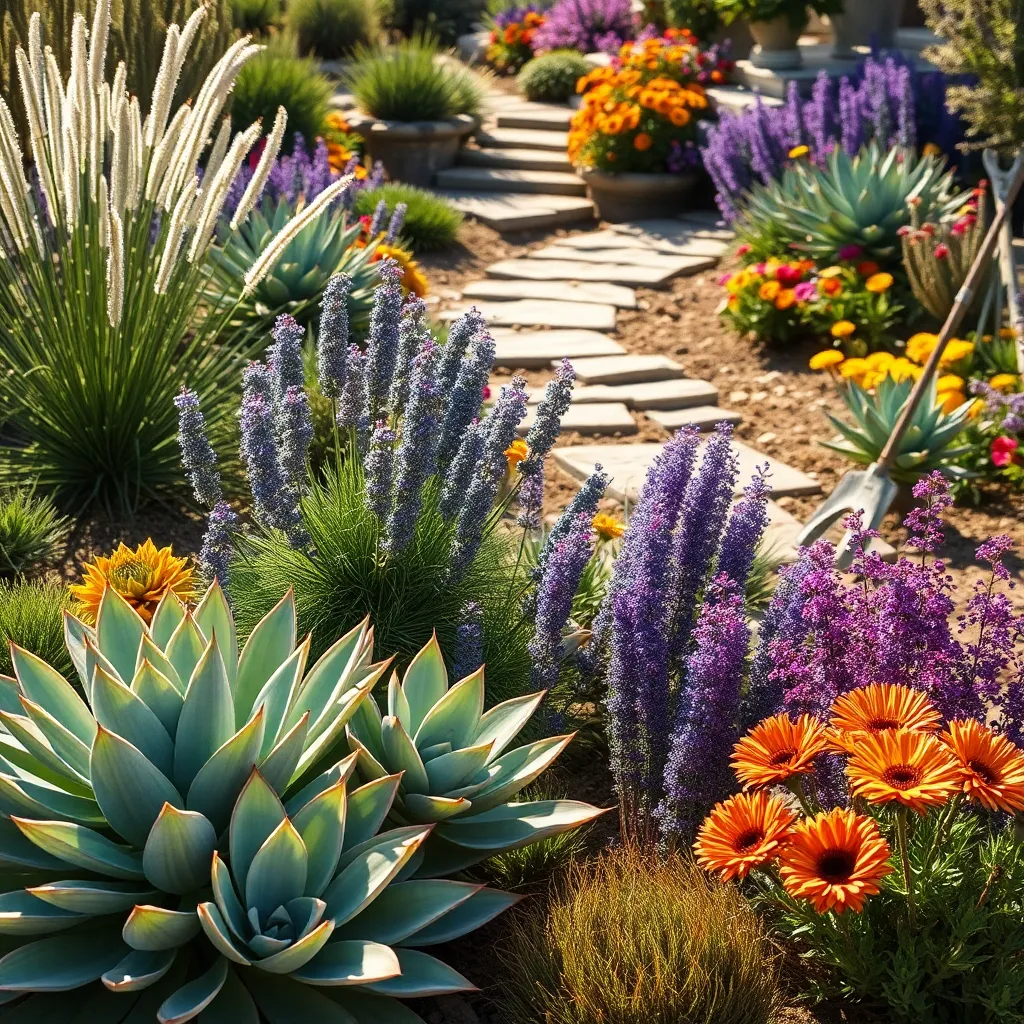
To truly thrive in dry climates, it’s essential to select plants that are naturally suited to arid conditions. Opt for drought-resistant plants like succulents, lavender, and sage, which are well-adapted to conserve water.
Improving soil quality can significantly enhance plant growth in dry climates. Use a mix of well-draining soil with organic matter to improve moisture retention and provide essential nutrients.
Watering efficiently is crucial in maximizing growth under such conditions. Implement a deep watering technique by watering less frequently but thoroughly to encourage deep root growth, which helps plants access water more effectively.
Mulching is a great technique to keep soil temperatures stable and moisture levels consistent. Apply a 2-3 inch layer of organic mulch, such as shredded bark or straw, around the base of your plants to reduce evaporation and suppress weeds.
Consider using raised beds or containers to manage water usage more effectively. These gardening methods allow you to control the soil mix and watering schedule more precisely, making it easier to cater to the specific needs of your plants.
Benefits of Drought-Resistant Planting
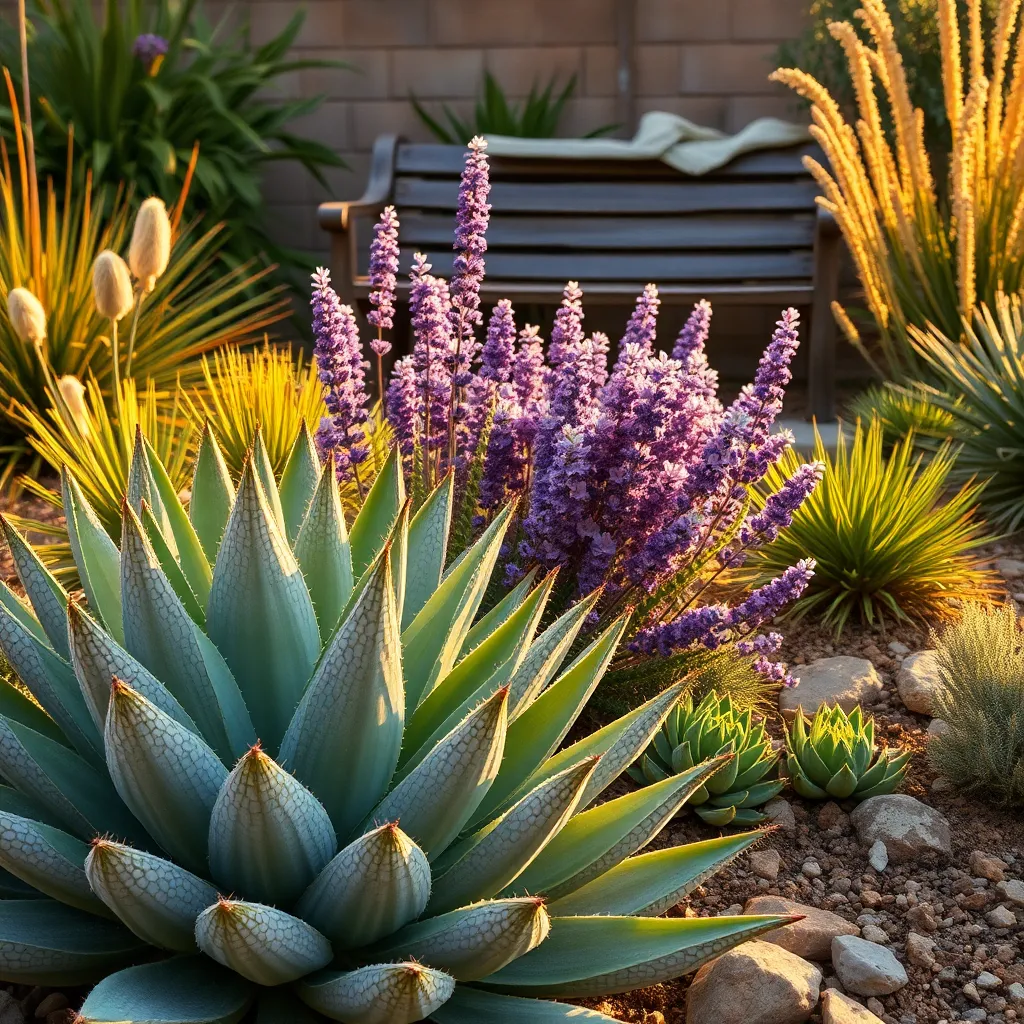
Drought-resistant planting offers numerous advantages, particularly in regions with limited water resources. By choosing plants that naturally thrive in dry conditions, gardeners can reduce their water usage significantly, which is both environmentally friendly and cost-effective.
Integrating drought-resistant plants into your garden isn’t just about water conservation. These plants often require less maintenance, as they are well-adapted to withstand harsh climates and poor soil conditions, making them ideal for busy gardeners.
When selecting plants for a drought-resistant garden, consider those that have naturally evolved to store water or reduce water loss. Succulents, for example, are excellent choices due to their ability to retain water in their leaves, while plants like lavender have small, oil-rich leaves that minimize evaporation.
To maximize the benefits of drought-resistant planting, ensure your soil is well-draining by amending it with materials like sand or gravel. This encourages deep root growth and enhances the plant’s ability to access moisture from deeper soil layers.
Conclusion: Growing Success with These Plants
In exploring the vibrant world of drought-resistant plants for hot climates, we discovered six resilient companions: the striking Agave, the versatile Lavender, the hardy Yucca, the charming Lantana, the enduring Cactus, and the adaptable Succulent. Each of these plants embodies unique qualities that mirror essential relationship concepts: resilience, adaptability, strength, vibrancy, endurance, and versatility. By nurturing these qualities in our relationships, we can thrive even in challenging environments.
Now, take immediate action by introducing one of these plants into your home or garden as a symbol of your commitment to cultivating strong, resilient bonds. As you care for this plant, reflect on how its characteristics can inspire growth in your relationships.
Don’t let this valuable insight slip away—bookmark this article for future reference. Let it serve as a gentle reminder that, like these plants, your relationships can flourish with care and attention. As you move forward, embrace the promise of relationship success, knowing that with the right foundation, perseverance, and adaptability, your connections can weather any storm and bloom beautifully.

